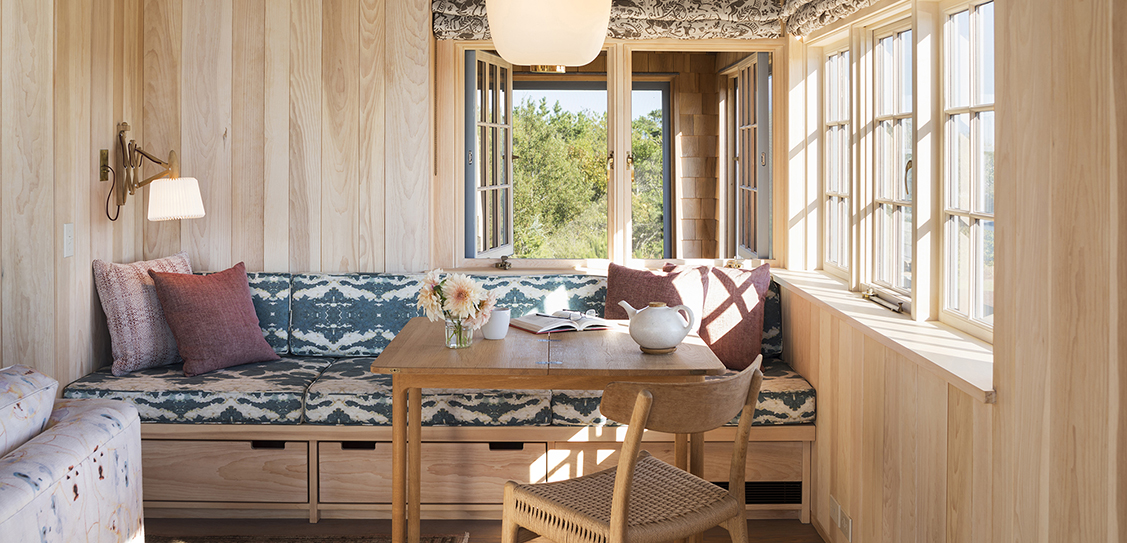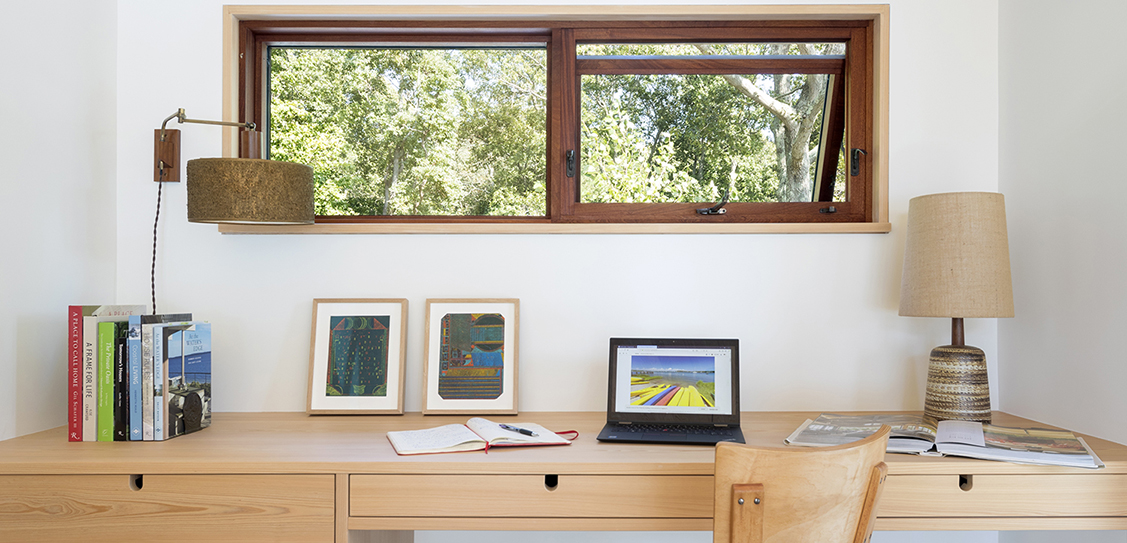As a pandemic sweeps across the United States and the rest of the world, some designers and architects see an acceleration of workplace and lifestyle trends that were being slowly assimilated already into mainstream culture: remote work, digital socializing and relying largely on online sources for goods and services.
On the other hand, some cultural norms are being completely reversed, such as traveling long distance, practicing daily commutes, and outsourcing childcare.
Architects like Andrew Franz, AIA, LEED AP, a native New Yorker and founder of the nationally active design firm Andrew Franz Architect, PLLC, are carefully observing and analyzing these rapid, simultaneous shifts in daily life as they unfold - and finding some useful lessons and even some positivity in the current crisis.
From an architectural and planning perspective, Franz sees many opportunities being exposed by the collective societal pause.
Franz said: "This crisis is a compulsory social experiment.
"It has forced many people around the world to quickly and fully adopt new technologies, ways of living, and approaches to doing business that was already becoming the ‘new normal,’ albeit very slowly.”
The Covid-19 pandemic, Franz says, has fanned the flames of the technological revolution - a movement that has been spreading around the globe for decades and has the potential to support a better work/life balance for all people, as well as a smarter, more energy-efficient built environment.
More people - specifically, more clients and bosses - are recognizing that face-face physical meetings and physical office attendance aren’t as critical for job performance and efficiency as they believed.
Franz added: "In fact, some loosening of old-school professional rules may enhance employee or personal performance.
Additionally, he adds that “because so many people - very, unfortunately - aren’t working right now, or are working from home, they aren’t moving about as much on a daily basis.”
This has meant more personal time for family, but also fewer cars and vehicles on the road and ultimately less pollution.
He said: “If we get used to this new, less mobile lifestyle and we end up maintaining it past the end of quarantine, the impacts for the future of transportation and the future of office buildings with their reduced occupancies might be massive.”
Franz expects that offices may become smaller and more flexible, allowing for more shared desks on a “rotating” basis as professionals integrate working remotely into their permanent routine.
However, he notes that offices will likely still serve a critical role, providing much needed moments of casual social interaction that is as critical to team building and creating company culture as it is to professional collaboration.
"After all, many of us have spent more time with our peers than we have with our families, sleep time discounted," says Franz.
He speculates that in the short-term, individual desks and personal work stations may regain popularity as people slowly relax social distancing protocols and return to the office, but remain vigilant and protective of personal space.
“Expect less density in the workplace whether that is less bench seating and more cubicles, or spread-out desks and private offices,” Franz said.
Many people have seen how our homes can absorb and become our own personal offices, studios and laboratories, he added.
Emphasizing that while many of the stringent lifestyle habits people are currently compelled to practice will eventually be relaxed - and many will fade away - Franz anticipates a continued and ongoing desire in people to work from home, especially once the family (or roommates) are not all there with you.
As the home once again becomes the epicenter of life for so many Americans, domestic design and architecture are in the spotlight more than at any other time in recent memory.
"Right now, houses and apartments have to be so much more than just a place to shower and sleep," says Franz.
"This crisis is not only revalidating the importance of having a home to go to in times like this - but almost more importantly it is asking us to question the nature of our dwellings - whether they are comfortable, functional, efficient and even inspiring to us."
With these expanded needs, the home must now serve as a workplace, a gym, a daycare, a school, a restaurant, and even a hospice.
To better optimize dwellings for this wide range of functions, Franz offers some time-tested design guidance:
Differentiate spaces with physical dividers - and schedule activities
Especially in smaller houses and apartments, designated spaces aren’t available for each activity or need.
People often have to take office work or homework to their kitchens or bedrooms with inadequate lighting or distracting smells and amid noisy or nosy family members and roommates.
Dividing spaces with physical barriers or partitions to create flexible zones within bigger rooms, says Franz, is one solution.
"We’ve seen the same issues people were facing in open offices taking place now inside people’s homes," he said.
"People who have to do focused tasks need a quiet environment, and meanwhile the kids need to play and the groceries need to get put away while the music or television is turned up too loud."
Physical dividers - even something as simple as hanging a curtain or fabric - can create boundaries and define different zones.
Franz also adds that scheduling spaces for needed activities at different times can also help mitigate friction in cramped quarters.
Use natural light and brighten up all interiors
An enthusiastic advocate of using daylight, Franz points to the scientific effects of sunlight and good electric sources on human psychology, which backs up his ample and creative use of natural light in his buildings and interiors.
"Natural light is proven to boost mood and productivity, so ideally you would have it coming in from multiple directions and sources," he says.
"Even if you only have one window in a room, don’t cover it - let the light spill in."
If a house or apartment doesn’t get much light, Franz suggests the next best thing: multiple electric illumination sources to flood more active spaces from multiple directions and most importantly, whether in the case of a small desk or large workroom, an LED task light.
Bring nature indoors or step outside
Franz stresses the importance of experiencing nature in some form every day.
"Whether it’s a plant on your windowsill, or a view of the tree outside your window, or even a little balcony you can step out onto for some fresh air - don’t take it for granted," says Franz.
"In my case, I have an exterior stair and balcony that I sit out on and catch some sun, take a call or vertically socialize with my great neighbors. Some people are fortunate enough to have access to a roof garden, a yard or adjacent green space,” he adds.
“At the very least, choose items made of natural materials for furnishing your home - real wood tables or chairs, stone sculptures or countertops, and artwork that represents nature are all great options. Think of Scandinavian interiors and how they introduce pattern into them to animate the long dark winters.”
Get really good wifi
“Staying connected is everything in our increasingly virtual world,” says Franz, “so having a great quality data connection installed in your home — perhaps even with a backup system should the first one fail — is a good idea.”
Also, make sure you are creating a hard copy of your data if you’ve transitioned fully to the cloud, cautions the architect.
As millennials and Generation Z come of age, their preferences for a nomadic lifestyle and untethered existence has led to a steady national decline in homeownership rates.
Crashpads, monthly rentals, and a slew of other temporary accommodations are clearly favored by up and coming generations, who also largely prefer to live in urban or urban-feeling areas.
But according to Franz “this crisis is reminding many of us how good it feels to have stable roots - to have a shelter to retreat to that reflects our deepest values, supports our needs, and gives us the true sense of safety, control and total belonging that we all crave.”



